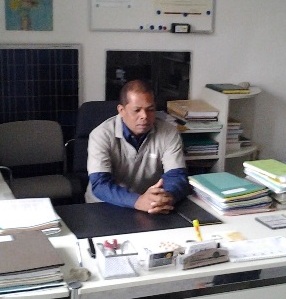Education for Peace What Building Peace Means
Abstract
Keywords
Full Text:
PDFReferences
Akinwamide. T. K. (2018). Bridging Across Language Divide for Growth and PeacefulCoexistence: A Panacea for Economic Recessionin a Multilingual Nigeria. Budapest International Research and Critics Institute-Journal (BIRCI-Journal). Volume I, No 3, October 2018, pp. 01-06e-ISSN: 2615-3076 (Online), p-ISSN: 2615-1715(Print).
Alliance for Peacebuilding. (2013). Selected definitions of Peacebuilding. August 12, 2013, Peacebuilding News. 2013. https://allianceforpeacebuilding.org/2013/08/selected-definitions-of-peacebuilding/> (Visited July 24, 2019).
Boutros-Ghali, B. (1995).An Agenda for Peace. New York, U.S: United Nations.
Conforti, O. D. F. (2018). Construcción de Paz. Diseño de intervención en conflictos. 3º Ed. Madrid, Spain: Dykinson.
Conforti, O. D. F. (2019). Building Peace. Research, Theury and Practice in the Criminal Law. Alicante, Spain: Acuerdo Justo.
Diakhaté, B. (2019). Racial Politics and Sexual Violence in Post-ApartheidContemporary South Africa in John Maxwell Coetzee’sDisgrace (2000). Britain International of Humanties and Social Sciences (BIoHS) Journal, 1-5.
Dzvimbo M.A. (2019). The Dynamics of Education on the Development of an IntellectualCitizenry in Africa. Budapest International Research and Critics in Linguistics and Education (BirLE) Journal, 1-9.
Galtung, J.(1976).Three Approaches to Peace: Peacekeeping, Peacemaking, and Peacebuilding.Peace, War and Defense: Essays in Peace Research, Vol. II, ed. Johan Galtung, pp. 297-298. Copenhagen: Christian Ejlers.
Galtung, J. (1998). Peace by peaceful means: peace and conflict, development and civilization. New York: Sage.
Galtung, J. (2010).A Theory of Conflict. Kolofon Press.
Galtung, J. (2013).A Theory of Peace. Kolofon Press.
Galtung, J. (2017).The Art of Peace. Kolofon Press.
Galtung, I. (2019). Keynote Speech, International Peace Research Association (IPRA) 7 Jan 2006. #607 Johan Galtung. Transcend Media Service. Editorial, 7, Oct. 2019.
Haugerudbraaten, H.(1998). Peacebuilding: Six dimensions and two concepts.African Security Review, 17-26.
Lederach, J. P. (1995). Conflict Transformation in Protracted Internal Conflicts: The Case for a Comprehensive Framework. Conflict Transformation, ed. Kumar Rupesinghe. New York: St. Martin's Press/ Basingstoke: Macmillan, 201-222.
Lederach, J. P. (1997). Building Peace: Sustainable Reconciliation in Divided Societies. Washington, D.C., U.S. Institute of Peace Press.
Santa Barbara J., Galtung J., and Perlman D. (2012). Reconciliation. Clearing the Past. Building a Future. Kolofon Press.
DOI: https://doi.org/10.33258/birle.v2i4.490
Article Metrics
Abstract view : 893 timesPDF - 254 times
Refbacks
- There are currently no refbacks.

This work is licensed under a Creative Commons Attribution-ShareAlike 4.0 International License.

This work is licensed under a Creative Commons Attribution-ShareAlike 4.0 International License

_.gif)




















_.gif)



